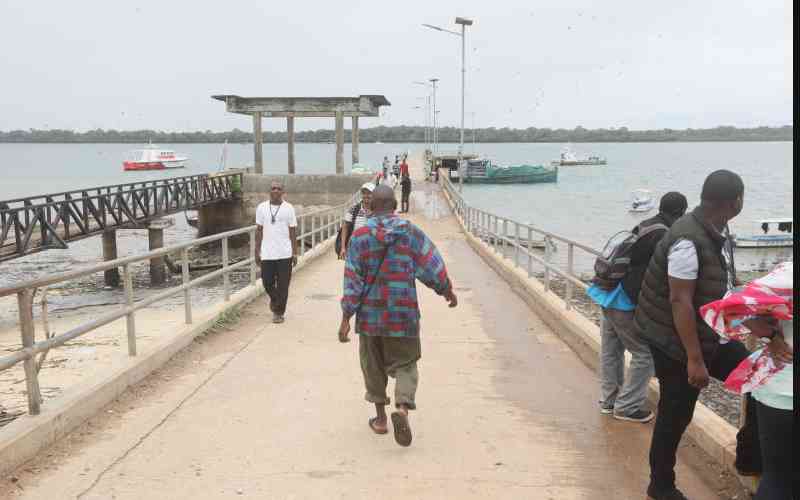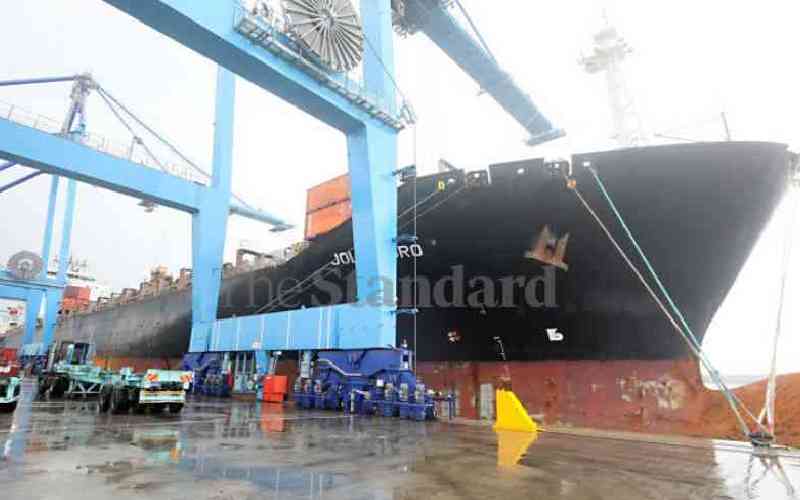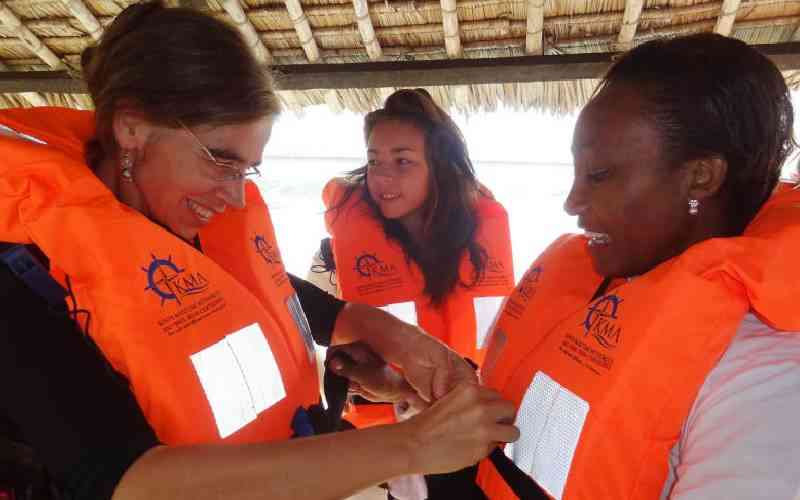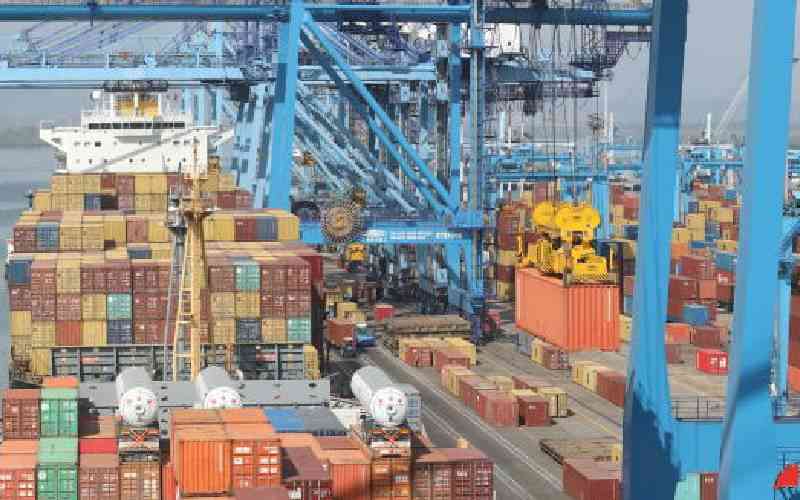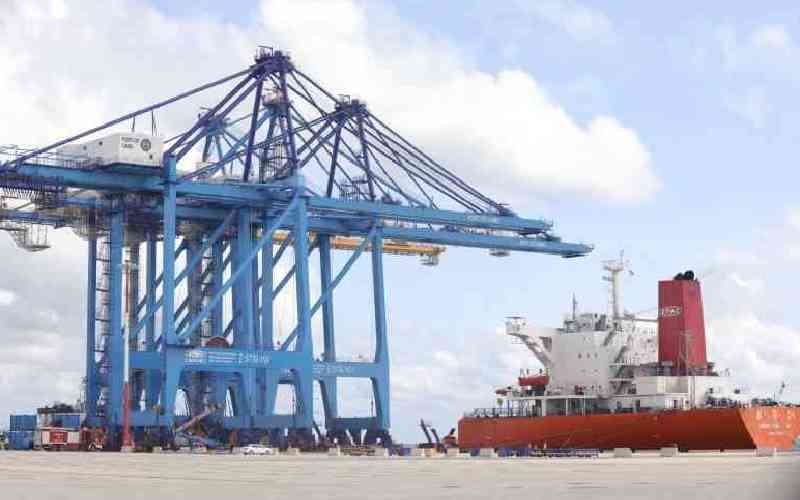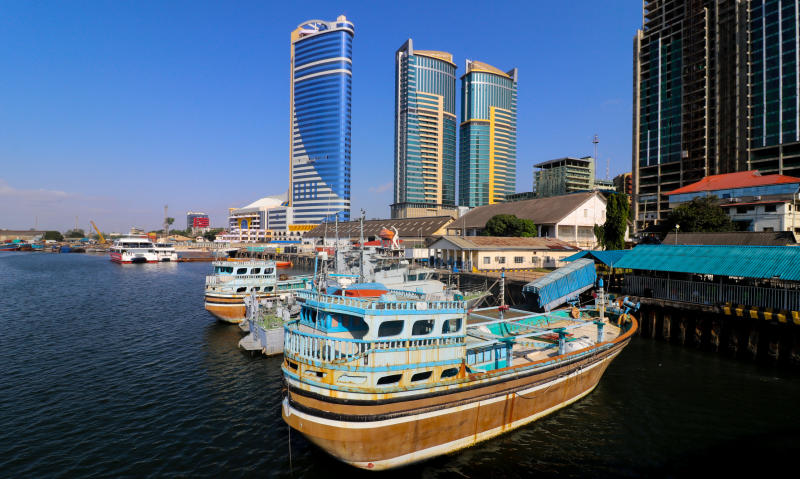
Dar es Salaam port [Courtesy]
Ugandan President Yoweri Museveni is always quick to warn neighbours not to dislike Kenya because “she is a pygmy who is an inch taller than her fellow pygmies in East Africa”.
What President Museveni means is that Kenya is a little stronger economically than her neighbours and so they should not be envious over such a trifling.
And indeed, Kenya’s strength is dwindling by the day if the performance of its ports in comparison to its neighbours is anything to go by.
Fresh data from Shippers’ Council of East Africa (SCEA) shows the country is losing cargo business destined to Uganda, Rwanda and Burundi, mainly to the Port of Dar es Salaam.
Goods to Uganda through Mombasa port dropped by four per cent in 2021-22 while those to Rwanda plummeted by 30 per cent.
Mombasa and the Port of Dar es Salaam have for decades battled for the lucrative transit business especially to Uganda, Rwanda, Burundi and Democratic Republic of Congo.
“It is very clear that cargo to Uganda is passing through another route,” said SCEA Chief Executive Gilbert Langat in an interview. He warned Mombasa to brace for stiff competition.
At the same time, major transport projects coming up in Tanzania, Somalia and Djibouti threaten to eat into Mombasa port’s transit market, and dampen the prospects of Lamu Port.
In Tanzania, a port project fronted by China, Oman and Tanzania in Bagamoyo is taking shape. Once complete, it is expected to eat into Mombasa port’s business.
In the Island of Zanzibar, a new port is also being built by United Arab Emirates, which trade analysts say will threaten Mombasa’s transshipment market.
Meanwhile, a Central Corridor Electric (CCE) Standard Gauge Railway (SGR) is being built by Turkey to link Burundi, Rwanda, Uganda and DRC shippers to Dar es Salaam.
“The (corridor) will link Burundi, Rwanda, DRC and Uganda to the western side of Tanzania. Shippers from those countries will find it an ideal route to use,” said Mr Langat.
The CCE SGR will be powered by electricity from the Grand Dam in the Selous Game Reserve and Songosongo gas.
Construction of a $3 billion (Sh344.5 billion) dam at Rufiji River is on. “In Tanzania, the Port of Mtwara has made Mombasa very unattractive for transshipment business,” said Tom Nyaminde of Tomsea Logistics Ltd.
Mr Nyaminde said the intense lobbying over the Uganda Oil Pipeline was a sign of trade battles ahead between Kenya and Tanzania once transport projects are completed.
On oil imports, a new oil pipeline is being constructed between Hoima in Uganda and Tanga in Tanzania. The Sh572 billion line is expected to be completed before 2025.
In 2016, Tanzania beat Kenya in the battle for the pipeline, which it had planned to link to Lamu Port. But Kenya has announced that it will go it alone and build the pipeline.
In Kenya, the construction of the Sh40 billion offshore Kipevu Oil Terminal in Mombasa, the largest of its kind in Africa, is also 96 per cent complete.
The offshore terminal will be able to load and offload very large sea tankers of up to 200,000 Deadweight tonnage (DWT) carrying all categories of petroleum products including crude oil, white oils and LPG.
Meanwhile, Somalia is also expanding its port of Berbera in Somaliland. The first terminal with a capacity of 500,000 twenty-foot equivalent units (TEUs) is about to be completed.
The port is expected to target the Ethiopian market through the Berbera road whose construction is funded by the Abu Dhabi Fund for Development and the UK’s Department of International Development.
At the same time, UK Aid is also funding the construction of the Hargeisa Bypass Road that will link to the modern highway in the Ethiopian side.
This is expected to be a direct, fast and efficient trade route for Ethiopian transit cargo. Kenya’s new port of Lamu is also targeting the Ethiopia market.
But the competition for the lucrative Ethiopian market will not be between Kenya and Somalia alone. Djibouti has also upped its fight for the Ethiopian Market.
A 752-kilometre Ethio-Djibouti railway line seen as a key route for passengers and cargo to and from Ethiopia is currently operational.
Interviews with players in the shipping industry reveal that Djibouti has been able to attract both cargo and military bases because it is located between Somalia, Eritrea, and Yemen.
Djibouti is also located near the Bab el Mandab Strait, which connects the Red Sea to the Gulf of Aden; a critical corridor for international shipping.
It is approximately 900 kilometres from Djibouti Port to Addis Ababa compared to 1,279 kilometres from Lamu Port.
This means that Kenya’s Lamu Port will have to compete with Djibouti and Durban in South Africa for the transshipment business.
Kenya Ports Authority has offered generous promotional tariffs to shipping lines and shippers keen to use Lamu Port.
Traders in Mombasa, however, say Mombasa and Lamu can still compete and get the business if the government puts in place systems to bolster efficiency.
Mombasa has for years been beleaguered by inefficient cargo clearance processes causing delays and rendering the port expensive and uncompetitive.
This scenario, blamed on cumbersome documentation, cargo clearance and customs procedures has contributed to the high costs of transport along the Northern Corridor.
According to a report by the Northern Corridor Transit and Transport Coordination Authority, different state agencies have not integrated their on-line systems.
The report reveals that clearing processes at port, container freight stations and customs procedures remain the main sources of delay and high logistics costs.
“There are more than twenty-nine clearance steps to import containers through Mombasa port which are destined for the Kenyan market, and twenty-seven steps for clearance for transit containers,” the report reads.
“Overall, the multiple and duplicated steps which are required to clear both local and transit containers illustrate the reasons for delays along the logistics chain, and the reason why clearance is the leading barrier to smoother transit flow in the region.”
 The Standard Group Plc is a multi-media organization with investments in media platforms spanning newspaper print
operations, television, radio broadcasting, digital and online services. The Standard Group is recognized as a
leading multi-media house in Kenya with a key influence in matters of national and international interest.
The Standard Group Plc is a multi-media organization with investments in media platforms spanning newspaper print
operations, television, radio broadcasting, digital and online services. The Standard Group is recognized as a
leading multi-media house in Kenya with a key influence in matters of national and international interest.



